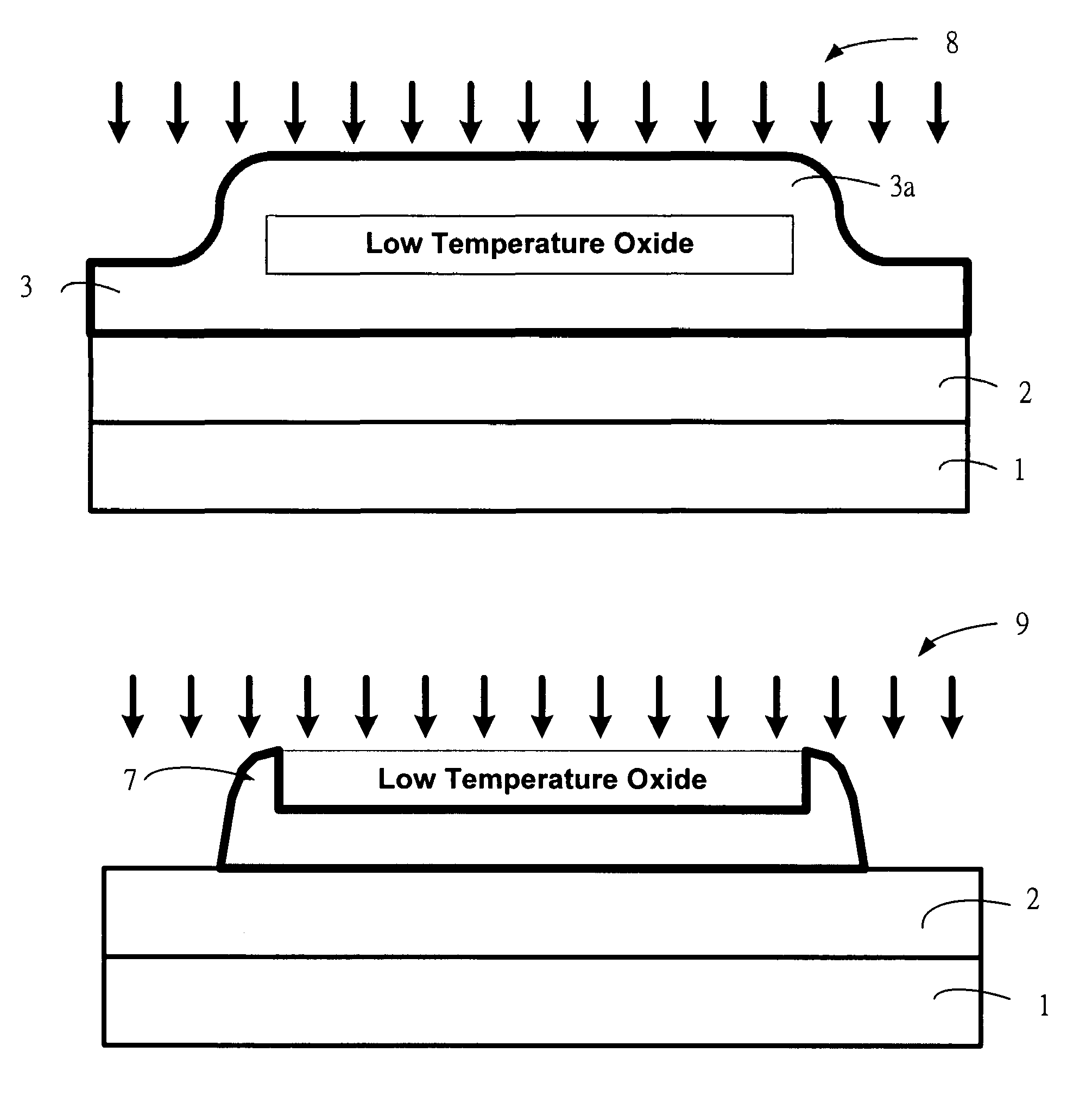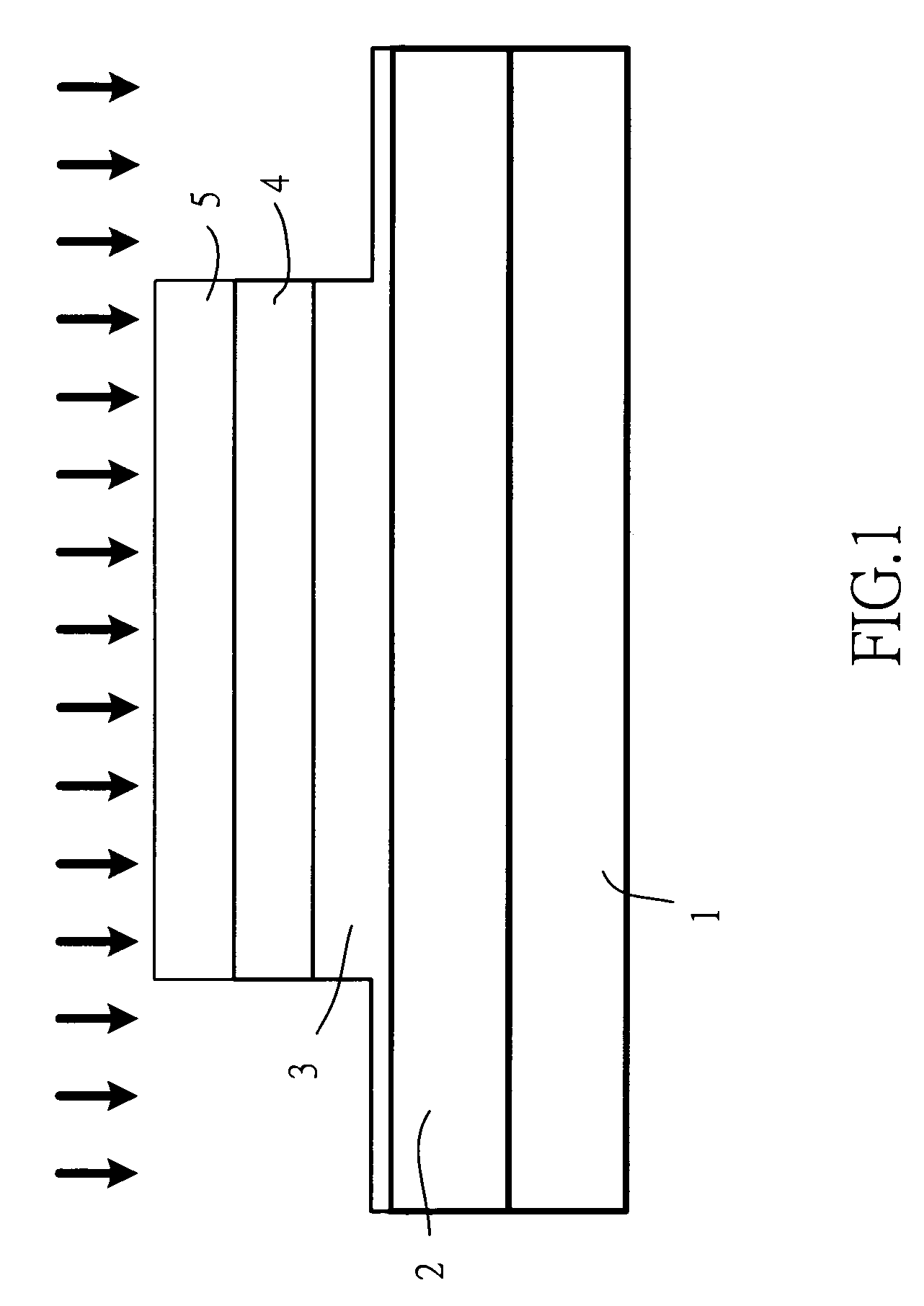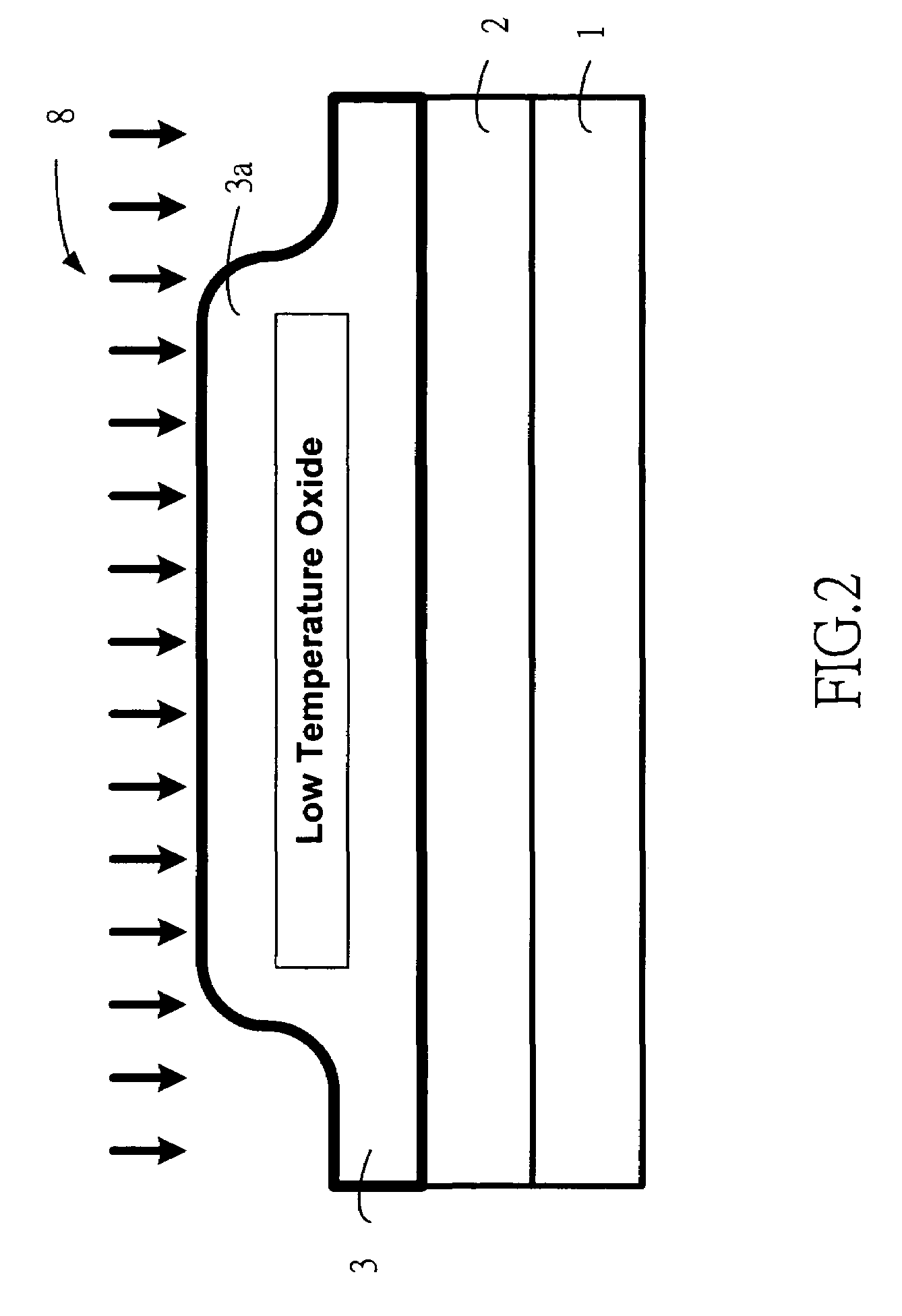Method for fabrication of polycrystalline silicon thin film transistors
a technology of polycrystalline silicon and thin film, which is applied in the direction of basic electric elements, semiconductor devices, electrical equipment, etc., can solve the problems of reducing the uniformity, limiting the size of silicon grains, and affecting the electrical properties of components, so as to reduce the differences between components, enhance the resolution of display, and facilitate the effect of mobility
- Summary
- Abstract
- Description
- Claims
- Application Information
AI Technical Summary
Benefits of technology
Problems solved by technology
Method used
Image
Examples
Embodiment Construction
[0021]The following descriptions of the preferred embodiment are provided to understand the features and the structures of the present invention.
[0022]Please refer to FIG. 1 to FIG. 7, which are cross-sectional views showing the forming process in vertical current direction according to the present invention; a vertical view showing the relative positions of the drain, the source, and the gate in the transistor according to the present invention; a SEM (scanning electron microscope) view according to the present invention; a view showing the positions of the graphs on the active layer and the scan direction of the recrystallization done by a continuous-wave (CW) laser according to the present invention; and a view showing the way to overcome the self-heating effect of the transistor with bigger channel width according to the prior art. As shown in the figures, the present invention is a method for fabrication of polycrystalline silicon thin film transistors, comprising the following...
PUM
| Property | Measurement | Unit |
|---|---|---|
| temperature | aaaaa | aaaaa |
| anisotropic | aaaaa | aaaaa |
| dielectric | aaaaa | aaaaa |
Abstract
Description
Claims
Application Information
 Login to View More
Login to View More - R&D
- Intellectual Property
- Life Sciences
- Materials
- Tech Scout
- Unparalleled Data Quality
- Higher Quality Content
- 60% Fewer Hallucinations
Browse by: Latest US Patents, China's latest patents, Technical Efficacy Thesaurus, Application Domain, Technology Topic, Popular Technical Reports.
© 2025 PatSnap. All rights reserved.Legal|Privacy policy|Modern Slavery Act Transparency Statement|Sitemap|About US| Contact US: help@patsnap.com



